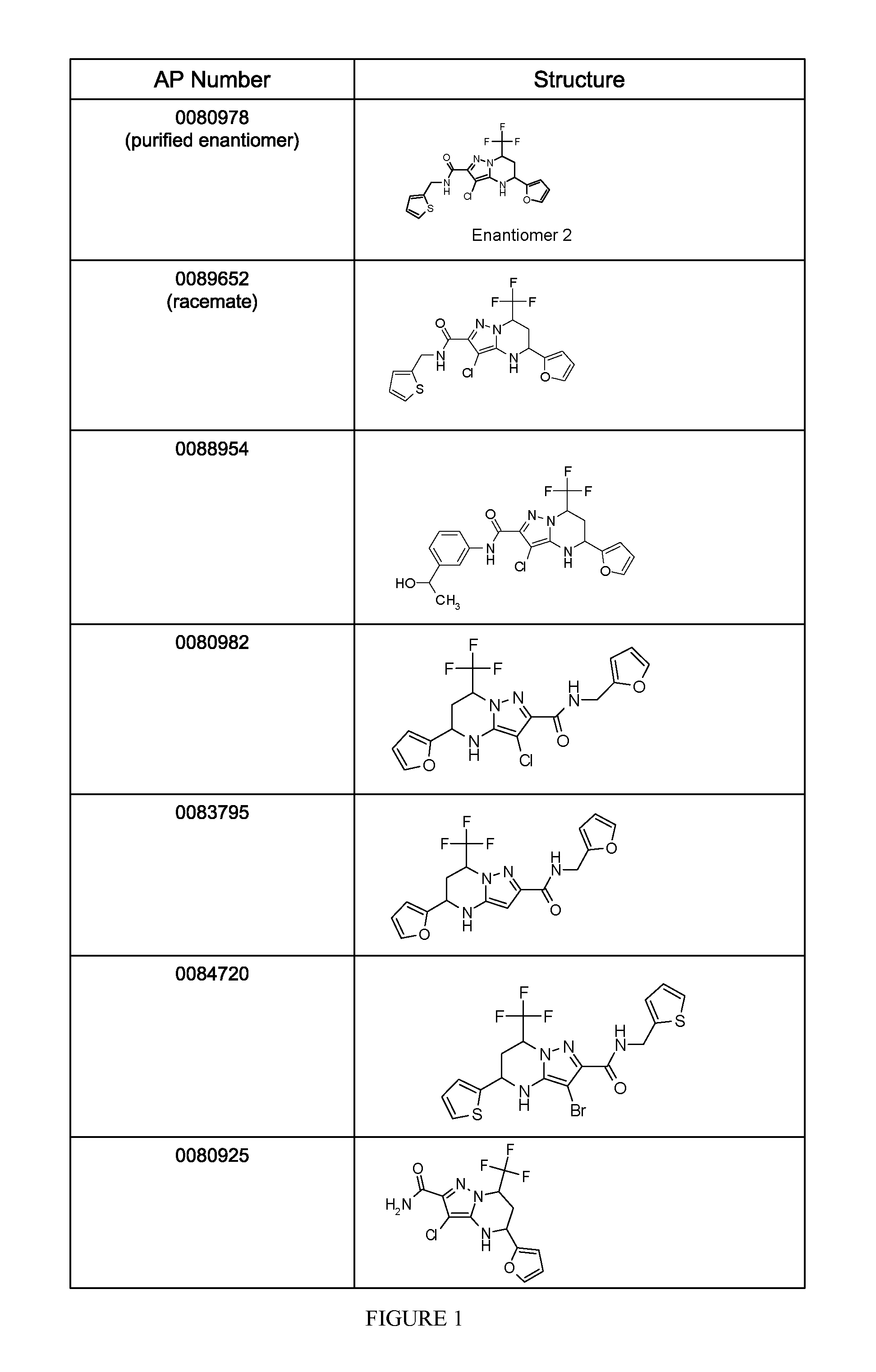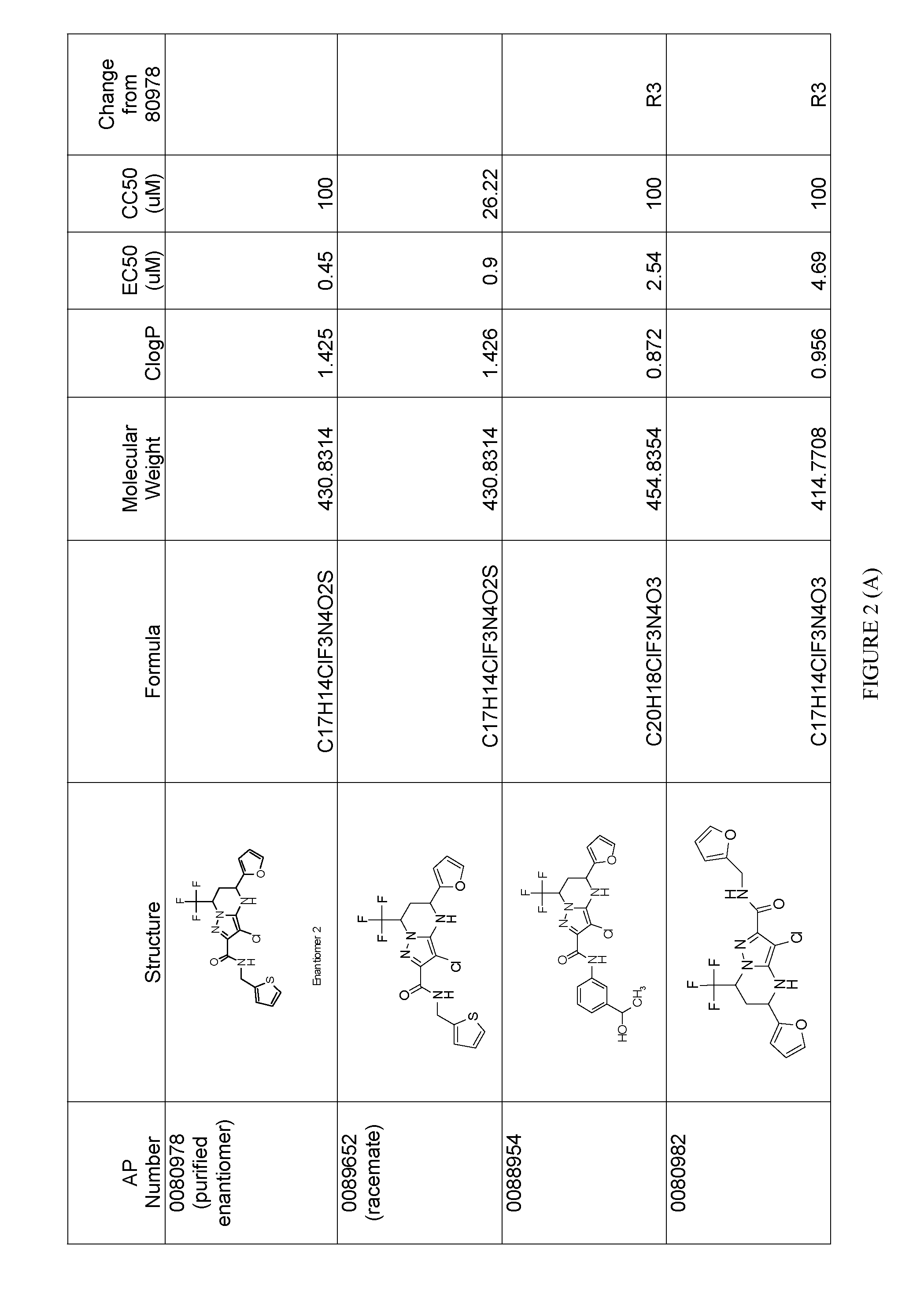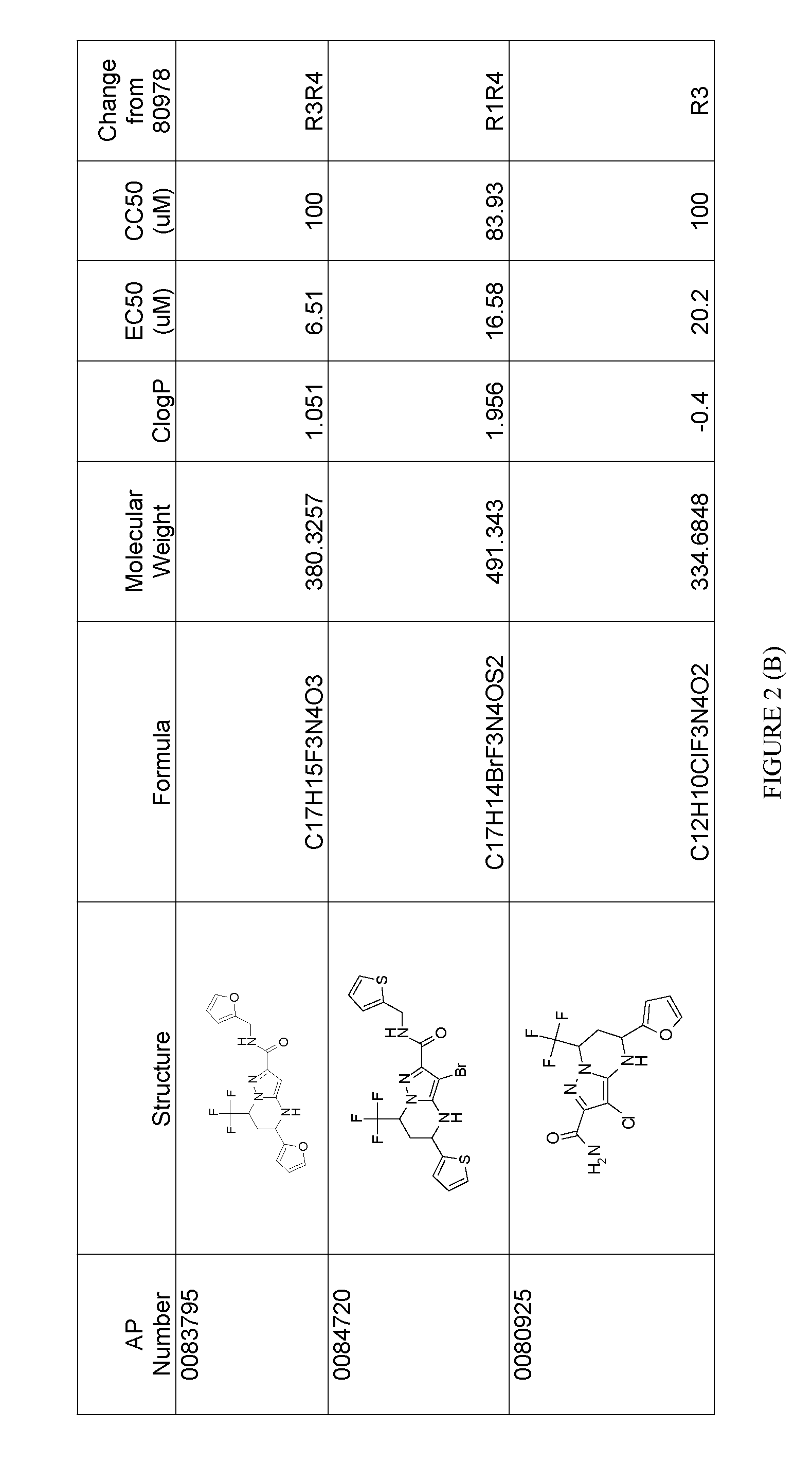Compounds, compositions, and methods for control of hepatitis c viral infections
- Summary
- Abstract
- Description
- Claims
- Application Information
AI Technical Summary
Benefits of technology
Problems solved by technology
Method used
Image
Examples
example 1
Synthesis of the Compound AP0089652 and Separation of Enantiomeric Forms
[0130]The following example illustrates the synthetic procedures used to prepare the compound AP0089652. The schemes and procedures used to synthesize the intermediates are followed by the schemes and procedures used to synthesize compound AP0089652 from those intermediates.
[0131]The preceding scheme illustrates the steps used to obtain the 5-amino-4-chloro-1H-pyrazole-3-carboxylic acid 17 intermediate.
Synthesis of the Intermediate 3-methyl-5-nitro-1H-pyrazole 9
[0132]Acetic anhydride (96.2 mL, 104.58 g, 1.02 mol) was cooled to −15° C. with an ice / NaCl bath and to this was dropwise, very slowly, added red fuming HNO3 (40.7 mL, 61.8 g, 0.98 mmol). The reaction is strongly exothermic and care must be taken to keep the temperature below 0° C. (inside temperature). This solution was then rapidly transferred with a teflon tube of sufficient diameter (to prevent warming on transfer) to an addition funnel with a cooling...
example 2
Analysis of HCV Inhibition Activity of AP0089652 and Separated Enantiomeric Forms
[0146]Inhibition of HCV replication by AP0089652, AP0080978 (enantiomer 2 from Example 1) and AP0080977 (enantiomer 1 from Example 1) were assayed by exposing cells harboring an HCV genotype 1b replicons to the compounds and quantitating HCV replicon levels following exposure. The replicon used in these studies was a transient genotype 1b subgenomic replicon generated from the Con1 strain. In this replicon, the HCV internal ribosome entry site (IRES) within the 5′ non-translated region (NTR) drives expression of the first 32 amino acids of the core protein fused to humanized Renilla luciferase (hRluc). The encephalomycarditis IRES lies 3′ to the hRluc open reading frame (ORF) and drives expression of non-structural (NS) proteins NS3 through NS5B. Huh7.5 cells (U.S. patent application Ser. No. 10 / 534,571) harboring this replicon were seeded into 96-well plates at 20,000 cells per well in medium containin...
example 3
Identification of the Region of Genotype 1b NS4B / Replicon that Confers Sensitivity to 80978
[0153]That NS4B is the target of 80978 was confirmed by a complementary approach. The differential response to 80978 by HCV genotype 1b and 2a replicons allowed the use of chimeric replicons to narrow down the region of the HCV genotype 1b NS4B coding region that confers sensitivity to 80978. The nucleotide sequence of the wild type HCV genotype 2a NS4B is provided as SEQ ID NO: 7 and the wild type HCV genotype 2a NS4B protein sequence is provided as SEQ ID NO:8. Using a plasmid containing an 80978-resistant stable HCV genotype 2a subgenomic reporter replicon cDNA, six replacement, or chimeric constructs were made, where the regions encoding the following amino acids of NS4B were replaced with the regions encoding the corresponding amino acids of NS4B from HCV genotype 1b: (i) 7-254, (ii) 7-52, (iii) 53-254, (iv) 219-254, (v) 7-52 and 219-254, and (vi) 53 to 218. The full-length NS4B protein i...
PUM
| Property | Measurement | Unit |
|---|---|---|
| Volume | aaaaa | aaaaa |
| Molar density | aaaaa | aaaaa |
| Molar density | aaaaa | aaaaa |
Abstract
Description
Claims
Application Information
 Login to View More
Login to View More - R&D
- Intellectual Property
- Life Sciences
- Materials
- Tech Scout
- Unparalleled Data Quality
- Higher Quality Content
- 60% Fewer Hallucinations
Browse by: Latest US Patents, China's latest patents, Technical Efficacy Thesaurus, Application Domain, Technology Topic, Popular Technical Reports.
© 2025 PatSnap. All rights reserved.Legal|Privacy policy|Modern Slavery Act Transparency Statement|Sitemap|About US| Contact US: help@patsnap.com



